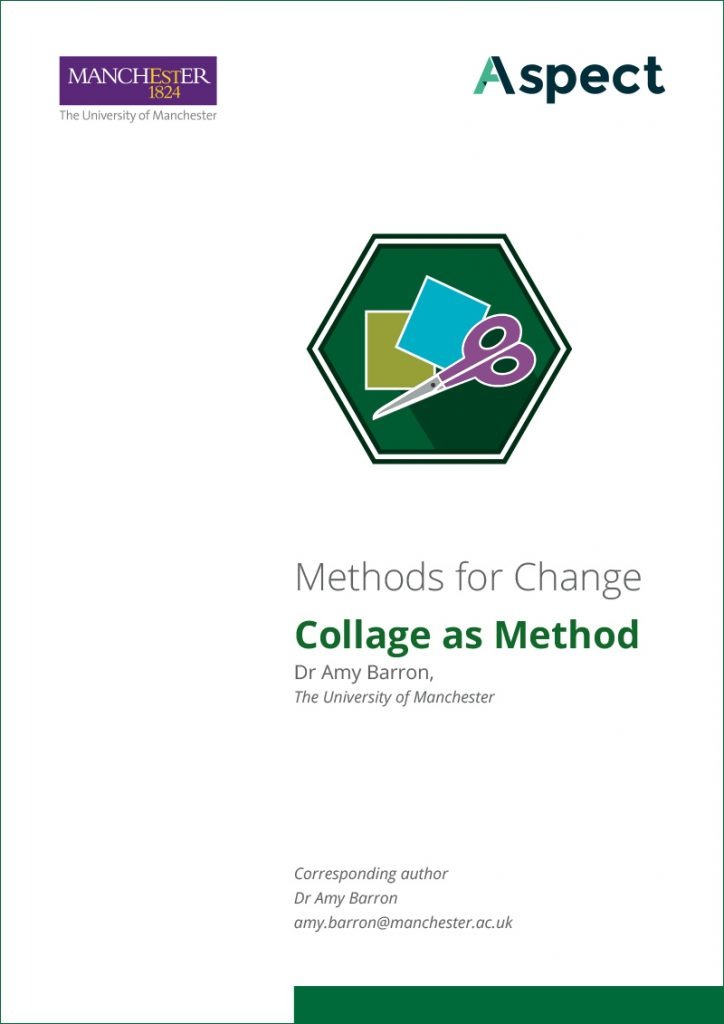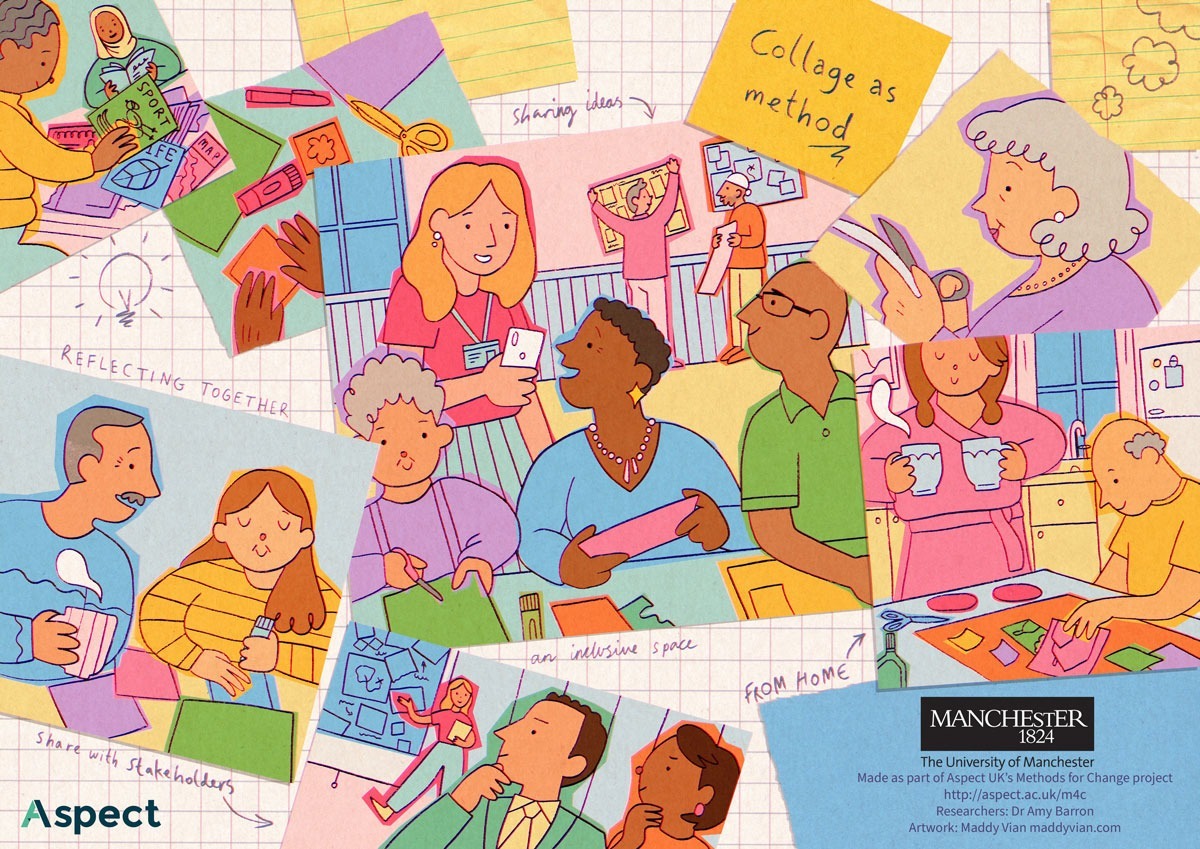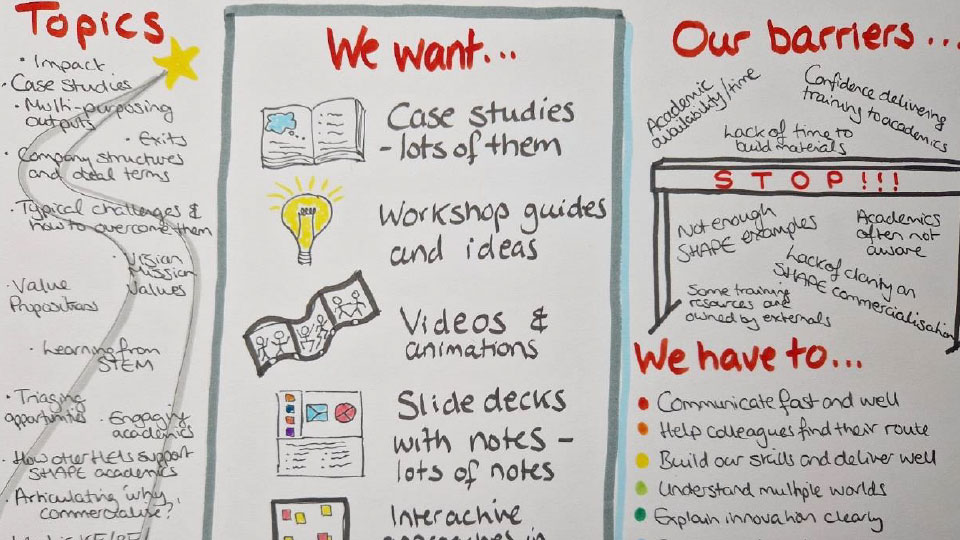The Collage method involves creating a visual representation of a topic through the assembling of materials on to a backing. These materials (which might include paper, printed images, words, textile pieces stitched onto a fabric, photographs, found materials, or a combination of all of these) are arranged in a way that is meaningful to whoever is creating the collage: this can be the participant or researcher.
Collage can be used as means of data collection whereby the researcher might ask questions about the research topic and the composition of materials as the participant creates their collage. If collaging is completed with several participants, observing and asking questions about qualities such as the layering of colours and the repetition and juxtaposition of materials can illuminate similarities and differences between participants.
Collage can also be used in the process of data analysis whereby the researcher gathers materials collated over the course of a research project (transcripts, photographs, archives, newspaper cuttings and other types of mixed media) and creates a collage from them to make sense of the materials. By using collaging in this way, a participatory dimension can be introduced into the process of analysis, whereby the researcher and participants create a collage and make sense of the materials together. The resulting collage can be used as a ‘way in’ to exploring a topic with other participants or to communicate ideas to different audiences. Collage is an accessible method that can be used to prompt conversations with people of varying abilities, in group activities, or one to one.





